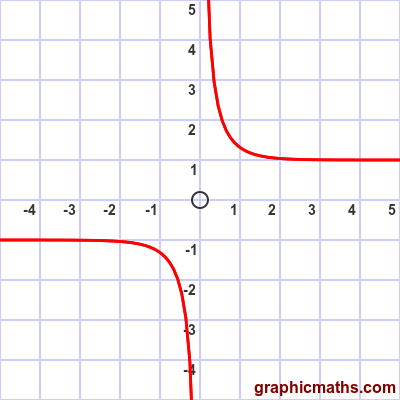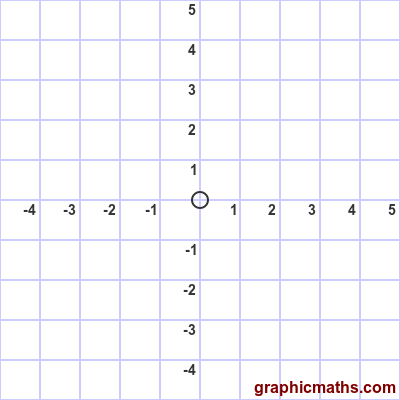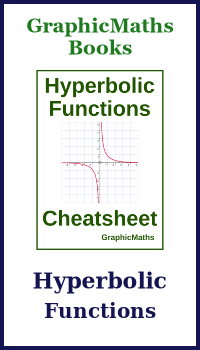coth function
Categories: hyperbolic functions pure mathematics

The coth function is a hyperbolic function. It is also known as the hyperbolic cotangent function.
Here is a video that explains the cosech, sech, and coth functions:
Equation and graph
The coth function is the reciprocal of the tanh function, and is only defined for non-zero values:
$$ \operatorname{coth}{x} = \frac{1}{tanh{x}} = \frac{\cosh{x}}{\sinh{x}} $$
(This is analogous with trig functions, where cot is the reciprocal of tan.)
Substituting the formula for tanh gives:
$$ \operatorname{coth}{x} = \frac{e^{x}+e^{-x}}{e^{x}-e^{-x}} $$
Here is a graph of the function:

coth as cosh divided by sinh
The coth function involves two functions, $\cosh{x}$ divided by $\sinh{x}$. This animation illustrates this:

When $x$ is large and negative, $\sinh{x}$ becomes ever closer to $-\cosh{x}$. The value of $\coth{x}$ therefore tends towards -1.
When $x$ is large and positive, $\sinh{x}$ becomes ever closer to $\cosh{x}$. The value of $\coth{x}$ therefore tends towards 1.
As $x$ approaches zero from the negative direction, $\sinh{x}$ approaches zero, so $\coth{x}$ tends towards -∞.
As $x$ approaches zero from the positive direction, $\sinh{x}$ approaches zero, so $\coth{x}$ tends towards +∞.
Other forms of the equation
If we take the two alternative forms of the tanh function, and invert them, we get two alternative forms of the coth function:
$$ \operatorname{coth} = \frac{e^{2x}+1}{e^{2x}-1} $$
$$ \tanh{x} = \frac{1+e^{-2x}}{1-e^{-2x}} $$
Related articles
Join the GraphicMaths Newsletter
Sign up using this form to receive an email when new content is added to the graphpicmaths or pythoninformer websites:

Popular tags
adder adjacency matrix alu and gate angle answers area argand diagram binary maths cardioid cartesian equation chain rule chord circle cofactor combinations complex modulus complex numbers complex polygon complex power complex root cosh cosine cosine rule countable cpu cube decagon demorgans law derivative determinant diagonal directrix dodecagon e eigenvalue eigenvector ellipse equilateral triangle erf function euclid euler eulers formula eulers identity exercises exponent exponential exterior angle first principles flip-flop focus gabriels horn galileo gamma function gaussian distribution gradient graph hendecagon heptagon heron hexagon hilbert horizontal hyperbola hyperbolic function hyperbolic functions infinity integration integration by parts integration by substitution interior angle inverse function inverse hyperbolic function inverse matrix irrational irrational number irregular polygon isomorphic graph isosceles trapezium isosceles triangle kite koch curve l system lhopitals rule limit line integral locus logarithm maclaurin series major axis matrix matrix algebra mean minor axis n choose r nand gate net newton raphson method nonagon nor gate normal normal distribution not gate octagon or gate parabola parallelogram parametric equation pentagon perimeter permutation matrix permutations pi pi function polar coordinates polynomial power probability probability distribution product rule proof pythagoras proof quadrilateral questions quotient rule radians radius rectangle regular polygon rhombus root sech segment set set-reset flip-flop simpsons rule sine sine rule sinh slope sloping lines solving equations solving triangles square square root squeeze theorem standard curves standard deviation star polygon statistics straight line graphs surface of revolution symmetry tangent tanh transformation transformations translation trapezium triangle turtle graphics uncountable variance vertical volume volume of revolution xnor gate xor gate
